Want to thank Steve G for the idea of how to do these lenses. i just did mine and it works well.
Thought i would post my way since it seems to be easier and may help someone else who would like to do this.
i bought these items at Lowes. i needed 4 washers, 4 bolts, 6 nuts. of course they all come in packs, except the washers.
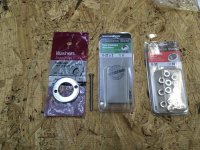
i chose these washers because my bulbs would fit thru them without having to drill them out. i marked the first one for drilling and then lined them all up in my vise. next i drilled a 9/64 hole thru them. This next pic is taken after it was done. so they are not lined up as well as when i drilled them.
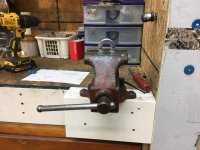
On two of the washers i used a #8x32 tap and threaded them. the other two i drilled out to 11/64.
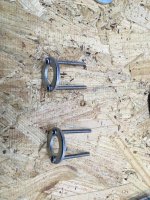
Next i took the reflector apart. Mine are the bullet type lenses, just because i like them. i cut a hole in the rubber large enough for my light bulb to go thru. basically i marked a washer on the back and cut to the size. the washers outer diameter is exactly the same size as the rubber flange that goes inside the body.
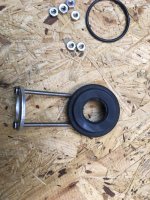
i put the lense back together with the threaded washer and bolts inside. i later found the lense wanted to push in and out so i put an o-ring around the outside of the washer and pushed the lense in place. this held it. put the unit in the car and worked the rubber flange inside. next i added the second washer and ran nuts up behind it. then i added two more nuts on just enough they allowed the bulb to go in but not hit the lenses. i did not get the same bulbs steve got so this was nice to be able to adjust them.
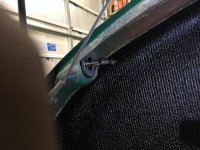
Next i added the light and put nuts on the back to hold in place.
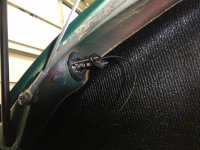
i adjusted my bulb so it was close to the lease but not hitting it.
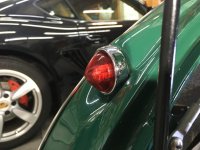
unfortunately with this type of bulb it shows in the lenses. i may go back and look for ones like Steve used above.
Then it was just wiring. i added a ground wire to the light and ran it to the same place the other lights are grounded. Next, since i had some left over bullets and double connectors, i used them to make the wiring connection. Rather than splice in to the existing wires. Once the left side was done, i did the right. of course that gets done in about a 1/3 of the time...
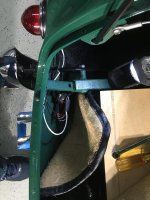
easy project. took about a day and nice to have the extra lights in the back. thanks again for the ideas.

 Hi Guest!
Hi Guest!

 smilie in place of the real @
smilie in place of the real @
 Pretty Please - add it to our Events forum(s) and add to the calendar! >>
Pretty Please - add it to our Events forum(s) and add to the calendar! >> 









